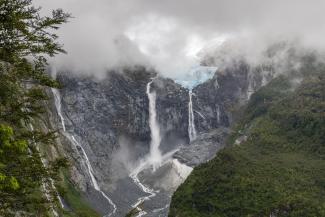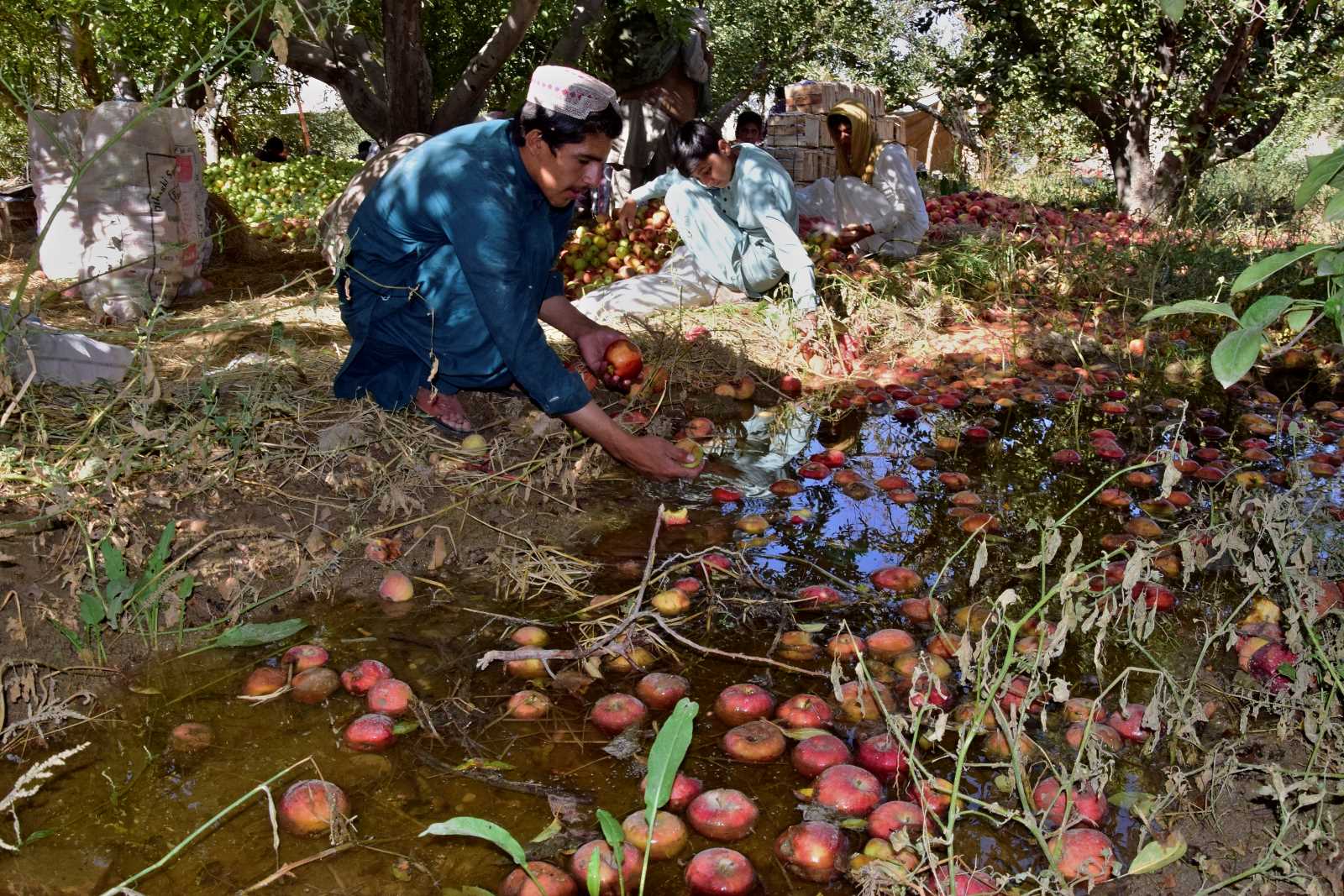Water crisis
Parched and privatised

Chile is in the tenth year of a mega-drought covering more than three-fourths of its territory. Citizens are facing shortages and paying ever higher prices for water. The country’s main industry, agriculture, is suffering. Animals are dying in droves and once-fertile regions are turning into deserts.
The main cause of this catastrophe is climate change. Temperatures are rising steadily, and rain- and snowfalls are declining. Glaciers are melting away. Chile has declared agricultural emergency zones in six of its 16 regions.
The natural catastrophe is being aggravated by a policy problem: Chile’s water-allocation system is market driven and only regulated lightly, so private-sector companies are in control. The result is high consumer prices for water. Whether private firms should own this vital resource is the topic of heated debate. Unless Chile addresses both its climate problems and its water-allocation system, the long-running water crisis will continue.
Chile’s Water Code of 1981 was established during the dictatorship of then President Augusto Pinochet. It declares that water rights can be owned and traded as property. Today, Chile’s water utilities are owned by large multinationals, among them Suez Group (French), Aguas de Barcelona (Spanish) and Marubeni (Japanese).
One aim of privatisation was to attract investment and expertise from global companies. This has happened, but at a high cost to the people. The commodification of water has not only led to high tariffs, but it has also undermined the idea that access to water is a basic human right that cannot be traded away.
Under the current system, more than 40 government agencies are involved in managing water resources. This multitude results in weak and fragmented oversight. The General Water Directorate in the Ministry of Public Works is the main regulator. It
- maintains an information system known as the water cadastre,
- enforces national policy and
- awards water rights through an auction system.
This focus is on market supply. It is neither ensured that people have access to water nor that ecosystems are kept healthy around water basins.
The deficiencies in the current system have given rise to water activism. Citizens are fighting high water tariffs and protesting against shortages. For three decades, some political leaders have been trying to reform the Water Code. In 2014, senators tried unsuccessfully to renationalise water resources. Activists are currently campaigning to block mining companies from acquiring further water rights.
The water debate is part of a wider discussion on reforming the country’s market-driven economic model. Chileans are debating a new constitution (see Javier Cisterna Figueroa in Debate section of D+C/E+Z e-Paper 2020/02). The idea is to rewrite the rules that have been in effect since the Pinochet dictatorship ended in 1990. Many advocates of a new constitution favour ending private control of water rights.
Painful impacts
While the debate rages, Chile’s worsening water shortage is causing a wide range of negative knock-on effects. They concern the natural environment, the agriculture, fisheries and mining sectors and – above all – the people. According to the World Resources Institute (WRI), a non-governmental think tank based in Washington, Chile will be one of the world’s most water-stressed countries by 2040. The WRI predicts the country will face severe competition for surface water, calculated as the ratio of local water withdrawal to renewable supply.
Citizens will feel the impact of scarce water most directly. Due to loss of water in the Maipo River, the availability of fresh drinking water in Chile’s capital, Santiago, is predicted to fall by 40 % by 2070. This will hurt the 40 % of the country’s population who live in the metropolitan region. Water scarcity is already affecting the city’s low-income communities brutally. They cannot afford the high price of water.
High tariffs have led low-income neighbourhoods to rely on their own groundwater sources, which are becoming ever harder to access. From 1969 to 2001, the groundwater table in Santiago fell from 12 to 26 meters below the surface. Continued drought has made matters worse.
Agriculture and mining companies are also scrambling for this increasingly scarce resource. Chile’s economy relies heavily on exports of avocados, wine and copper. In the metropolitan region of Santiago, agriculture accounts for 74 % of water use. Copper and fruit exports alone mean that Chile is currently exporting 1,900 million virtual cubic meters of water per year. That is 1.4 times more than the annual amount of drinking water provided to Chileans.
The environmental impacts of the water shortage are harsh as well. In the Andes, the glaciers are slowly shrinking and snow lines are retreating. The big problem is that glaciers are an important mechanism for storing water. They replenish rivers, lakes and groundwater sources. When glaciers are diminished, entire water-catchment basins feel the impacts downstream.
Diminished river flows affect other ecosystems. In central and southern Chile, rivers are now discharging 25 % to 75 % less nutrients such as nitrates and phosphates into the Pacific Ocean in autumn and winter than before the extended drought began. The discharge of nutrients depends on how much fresh water reaches the coast. These nutrients are essential for the growth of phytoplankton (the first link in the aquatic food chain), which in turn is essential during spawning, larval development and feeding of fish and crustaceans. Some of those fish, such as anchovies and sardines, are of great economic importance for Chile.
Chile is normally considered to be water rich, especially in the south. However, the water resources are being diminished by the climate crisis. From 2010 to 2014, Chile’s average and maximum temperatures were 0.5 to 1.5 degrees Celsius above the figures recorded from 1970 and 2000. Rising temperatures, of course, mean more evaporation. Scientists reckon, moreover, that human-made climate change is the cause of at least a quarter of Chile’s decline in rain- and snowfall. Steady temperature increases and sharp changes in weather patterns are changing landscapes and ecosystems for the worse.
Possible solutions
Chile’s government, as well as foreign investors, are considering solutions to these problems. In his announcement of the proposed 2020 budget last autumn, President Sebastián Piñera announced plans for building 26 new water reservoirs, water desalination plants and innovative irrigation projects.
Some projects envision building desalination plants along the coast and transporting the water to cities. This approach however was tested in Antofogasta, a port city in northern Chile, and proved to be both expensive and potentially damaging to the environment because harmful effluent was pumped back into the sea.
Another proposed project would bring freshwater from the south – home to many fjords and inlets – to Chile’s dry central and northern cities via a “water highway.” However, the southern regions cannot see the benefit in taking water from their rivers and lakes. That would hurt fish populations and fishing economies. Indigenous peoples also oppose diverting water from the region.
Other solutions are more environment-friendly. Measures to adapt to climate change include harvesting water from fog, installing rainwater-catchment systems, as well as planting native trees which thrive despite scarce rainfall and improve soil retention. The latter approach would also store carbon and thus contribute to climate mitigation. In addition, experts are considering changing agricultural practices to reduce water use and greenhouse-gas emissions (see Susanne Neubert in Focus section of D+C/E+Z e-Paper 2019/11).
Finally, reformers advocate fundamentally changing the country’s water allocation system – in effect renationalising water resources. Because water distribution is a business, companies focus more on producing and transporting water than on ensuring long-term sustainability by protecting ecosystems. Political debate is needed on how to include water-supply issues in the larger discussion of how best to deal with climate change. Water is not only a vital commodity. It is a core component of ecosystems and affects everything in the natural environment.
Encouragingly, Chile’s National Climate Change Adaptation Plan highlights the need to strengthen measures to mitigate climate change and to adapt to the phenomenon across the country. It aims to improve the efficiency of water use in industry and agriculture as well as to better protect water basins, rivers, lakes and aquifers.
In view of Chile’s worsening water shortages, this is just a beginning. Wide-ranging and decisive action is needed. Otherwise, the country will run dry in the decades ahead.
Katie Cashman is a sustainable development and social innovation consultant who has worked with UN-Habitat (United Nations Human Settlements Programme), among other organisations.
kcashman23@gmail.com













